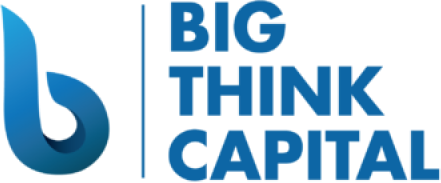Navigating the Flood of Small Business Tax Increases: Strategic Financial Tools to Maintain Profit Margins and Secure Competitive Advantage
Estimated reading time: 5 minutes
- Understand the tax landscape for small businesses.
- Leverage strategic financial tools to combat tax increases.
- Tailor your financial strategy to your business needs.
- Stay informed about ongoing tax changes.
Table of Contents
- Understanding the Tax Landscape for Small Businesses
- Strategic Financial Tools to Combat Tax Increases
- Tailoring a Financial Strategy
- Practical Insights for Business Owners
- Conclusion
- FAQ
Understanding the Tax Landscape for Small Businesses
The tax structure is one of the most critical areas affecting small businesses. As of 2025, small business owners can expect several key changes:
- Corporate Tax Rates: In recent years, there has been a push for higher corporate tax rates, particularly for businesses with earnings above a certain threshold. This can reduce the disposable income available for reinvestment and growth.
- State and Local Taxes: Many states have also adjusted their tax structures, which may include increased sales tax or property tax rates. Consequently, businesses operating in multiple states need to navigate a more complex tax environment.
- Self-Employment Tax: Owners of pass-through entities, such as S corporations and partnerships, may face an increase in self-employment tax, impacting their take-home profits significantly.
- Payroll Tax Increases: If a business has employees, payroll taxes are likely to rise, resulting in increased operational costs.
- Rising Compliance Costs: Small businesses must also factor in the potential increase in compliance costs related to new tax regulations and reporting requirements.
It is vital that business owners stay informed about these changes to prevent any lapses in compliance and to strategize effectively.
Strategic Financial Tools to Combat Tax Increases
Facing these ongoing tax burdens, small business owners must be proactive in utilizing financial tools that can help maintain profit margins. Here are some strategic financial solutions:
Working Capital Advances
Working capital is essential for day-to-day operations. A working capital advance provides immediate access to funds, allowing business owners to manage expenses more effectively during tax season. This type of funding can directly support:
- Cash flow management: Ensuring that necessary payments are covered without dipping into reserves.
- Operating expenses: Facilitating payment of increased payroll and operational costs promptly.
By using working capital advances, owners can focus on strategic investments instead of letting tax obligations stifle their growth.
Equipment Financing
If your business heavily relies on equipment, consider investing in equipment financing. Here are reasons why:
- Tax Deductions: Under Section 179, businesses can deduct the full purchase price of qualifying equipment purchased or financed during the tax year, providing immediate tax relief.
- Cash flow management: Instead of paying full upfront costs, financing allows for manageable monthly payments.
This strategic financing tool ensures that businesses keep up with technological advancements while controlling tax implications.
Merchant Cash Advances (MCA)
MCAs provide a lump sum payment to businesses in exchange for a percentage of future sales. This funding option can be particularly beneficial for:
- Seasonal businesses: Companies with fluctuating income can secure cash during off-peak seasons.
- Rapid funding: MCAs generally have a streamlined application process, minimizing the time to secure financing and enabling quicker decision-making.
This form of funding allows small business owners the flexibility to respond to immediate needs while navigating increased tax obligations.
SBA Loans
SBA loans are among the most favorable financing options available, with lower interest rates and longer repayment terms than many alternatives. Benefits include:
- Affordability: With fixed or variable interest rates generally lower than traditional loans, small businesses can manage investments comfortably while offsetting tax pressures.
- Large amounts of capital: SBA loans can provide significant funds for expansion, equipment purchase, or refinancing debt, thus boosting profitability.
Tailoring a Financial Strategy
Given the variety of financial products available, it’s vital to create a clear action plan that fits your business’s unique situation. Here are steps to tailor your financial strategy effectively:
- Assess Your Financial Health: Understand your current revenue, expenses, and profit margins to forecast how tax increases will affect your cash flow.
- Explore Multiple Funding Options: Each business is unique. Evaluate different funding solutions, including working capital advances, equipment financing, or SBA loans, to determine which aligns best with your financial needs.
- Consult with Financial Experts: Engaging with a professional advisor or a brokerage like Big Think Capital can provide tailored insights into the best financing options suitable for your business.
Practical Insights for Business Owners
Understanding tax liabilities and keeping up with financial solutions is imperative for small business success. Here are three practical takeaways to consider:
- Stay Informed: Keeping up to date with federal, state, and local tax changes will enable better financial planning. Utilize resources such as the IRS website and the National Federation of Independent Business for updates.
- Maintain Flexibility: Diversify your financial options. Having knowledge of and access to different types of financing will allow your business to adapt to unexpected changes, including tax hike implications.
- Plan Ahead for Taxes: Incorporate quarterly tax payment strategies into your financial planning. As tax liabilities can be significant, it is essential to include them in your cash flow management plans early on.
Conclusion
Tax increases can present genuine challenges for small businesses, threatening profit margins and operational stability. However, by proactively utilizing financial tools such as working capital advances, equipment financing, and SBA loans, business owners can mitigate these challenges effectively.
With the right strategies in place, small business owners can not only navigate the complex tax landscape but also maintain their competitive advantages in 2025 and beyond. At Big Think Capital, we are dedicated to helping you unlock the funding solutions that best fit your business needs. To learn more about how we can assist with your financial strategies, visit bigthinkcapital.com or speak with one of our funding experts today.
Your business’s financial health is important – let us be your partner in achieving sustainable growth.
FAQ
Q: How can small businesses prepare for the tax changes in 2025?
A: Small businesses can prepare by staying informed on tax updates, assessing their financial health, and exploring various funding options to help cope with potential increases.
Q: What financing options are best for managing increased tax burdens?
A: Working capital advances, equipment financing, and SBA loans are all beneficial tools that can help businesses manage increased tax burdens and maintain operational flow.
Q: Where can I find more resources on small business taxes?
A: Resources include the IRS website and the National Federation of Independent Business.






